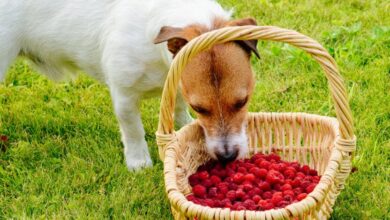
Parsnips are not the most common vegetable many pet owners think about sharing with their dogs, but they are full of fiber, vitamin C, and antioxidants that support digestion, immunity, and heart health. If you are preparing parsnips for yourself, you might also consider whether they are safe for your furry companion.
Can Dogs Eat Parsnips? Yes, dogs can eat parsnips safely when prepared correctly and given in moderation. However, before you toss a piece to your pup, there are surprising risks many pet owners don’t know about. Raw parsnips can pose choking hazards, and improper portions may cause digestive upset or blood sugar spikes, especially in dogs with diabetes or kidney issues.
Many dogs are curious about the foods we eat, and some owners share vegetables as treats. Parsnips contain beneficial vitamins like B6 and folate, as well as minerals such as magnesium and potassium, which support energy and metabolism. However, serving them without understanding proper preparation methods could lead to health complications.
Cooked, plain parsnips without seasoning, salt, or butter can be given to dogs as an occasional snack. It is important to pay attention to portion size, cooking methods, and your dog’s individual health conditions.
Read through this article to learn when parsnips are helpful for dogs, when they are not, and how to feed them safely. This information can help you decide if parsnips are a good treat for your dog and avoid the common mistakes that could harm your beloved pet.
Understanding Parsnips
Parsnips are sweet, earthy root vegetables that offer nutritional benefits for both people and dogs. They belong to the same plant family as carrots and celery, and contain vitamins C, B6, and K, as well as fiber, potassium, and antioxidants. When served plain, cultivated parsnips from the grocery store are safe and nutritious for dogs, whether raw, steamed, or roasted. They can be a good low-calorie snack option.
Wild vs. Cultivated Parsnips
Here’s where things get important: wild parsnips are completely different from the ones grown in gardens or sold in stores. Wild parsnip (Pastinaca sativa) is a tall, invasive plant that grows up to 4 feet high with yellow umbrella-shaped flowers. The wild variety contains toxic compounds called furanocoumarins in its leaves, stems, and seeds, which can cause serious skin burns and photosensitivity if dogs (or people) brush against or chew on them. The cultivated parsnip roots sold for eating, however, are perfectly safe and non-toxic. Just remember: the parsnips from the store are your friend, but those tall yellow-flowered plants growing wild should be avoided during walks.
Can Dogs Eat Parsnips?
Dogs can eat parsnips safely if they are prepared properly and given in small amounts. Parsnips can be a healthy, occasional treat.
Parsnips contain fiber, vitamin C, and antioxidants that support digestive health and immunity. They also provide B vitamins, potassium, and magnesium, which contribute to energy, muscle function, and general health. Their low calorie content makes them suitable for dogs that need to manage their weight.
However, too much parsnip can upset your dog’s stomach, especially if served raw. Raw parsnips are tough and hard to digest, so always cook them first. Steaming or boiling works best—just skip the salt, butter, spices, or anything with garlic or onions.
When introducing parsnips, start with a small amount to observe any reaction. Cut parsnips into bite-sized pieces to reduce the risk of choking, particularly for small breeds. A spoonful or two occasionally is sufficient. Parsnips should be given as a treat, not as a meal replacement.
Health Benefits of Parsnips for Dogs
Parsnips can be a useful addition to a dog’s diet, providing extra nutrition. These root vegetables are not only suitable for people but can also offer health benefits for dogs.
Essential Vitamin Powerhouse
Vitamin C: Your Dog’s Natural Shield
Parsnips are a good source of vitamin C, which supports the immune system. This antioxidant helps protect cells from damage and maintains immune function.
Vitamin K: Building Strong Bones
Vitamin K is important for blood clotting and bone health. It helps ensure proper clotting and supports strong bones as dogs age.
B-Vitamins: Brain and Body Support
Parsnips contain several B-vitamins, including B6 and folate, which work together to support your dog’s nervous system and metabolism. Folate is particularly important as it helps with cell division and supports healthy red and white blood cell production, keeping your dog energetic and vibrant.
Mineral Benefits That Matter
Potassium: Heart Health Hero
Potassium in parsnips supports heart, nerve, and muscle function. It helps maintain heart rhythm and healthy muscle contractions.
Folate: Cellular Support System
Working hand-in-hand with other nutrients, folate aids in cell division and supports immune function. This B-vitamin is essential for maintaining your dog’s overall health and vitality, helping their body repair and regenerate cells efficiently.
Digestive Health and Weight Management
The high fiber content in parsnips offers fantastic benefits for your dog’s digestive system. Both soluble and insoluble fiber work together to promote healthy digestion and regular bowel movements while helping your pup feel satisfied after meals. This makes parsnips an excellent low-calorie treat option for dogs who need to maintain a healthy weight.
Antioxidant Protection
Parsnips are rich in antioxidants that fight free radicals and help reduce inflammation in your dog’s body. These natural compounds provide anti-cancer, anti-inflammatory, and anti-fungal properties, offering your dog protection against various health issues while supporting their overall well-being.
When adding parsnips to a dog’s diet, start with small amounts and serve them plain, without seasonings, oils, or additives.
Potential Risks and Side Effects of Parsnips for Dogs
While parsnips can be a nutritious treat for dogs, it is important to understand the potential risks before including them in a dog’s diet. Awareness of these concerns can help keep pets safe and healthy.
Digestive Issues
The fiber in parsnips can be beneficial in small amounts, but too much may cause digestive problems. Pet owners should watch for the following signs:
Common Symptoms Include:
- Diarrhea and loose stools from too much fiber overwhelming the digestive tract
- Bloating and stomach discomfort can make your pup feel miserable.
- Excessive gas and flatulence are unpleasant for everyone in the household.
- Stomach cramps may cause your dog to appear restless or uncomfortable.
The recommended fiber intake for dogs is 2-4% of their total diet, so even a small amount of parsnips can exceed this limit.
Blood Sugar Concerns
Parsnips have a relatively high glycemic index, which can cause rapid increases in blood sugar levels. This is especially important for some dogs:
Key Considerations:
- Blood sugar levels can rise quickly after eating parsnips, even though they are low in sugar.
- Diabetic dogs face special risks and should only eat parsnips after veterinary approval.
- Blood sugar fluctuations from parsnips can trigger or worsen metabolic issues in susceptible dogs.
Always consult your veterinarian before offering parsnips to dogs with diabetes or other metabolic conditions.
Kidney Health Risks
Parsnips contain high levels of potassium, which can be problematic for dogs with impaired kidney function. Monitor for the following signs:
Warning Signs Include:
- Excessive thirst and urination as the kidneys struggle to process excess potassium
- Lethargy and weakness indicate potential kidney stress.
- Loss of appetite or digestive upset in dogs with existing kidney disease
Dogs with kidney problems should avoid parsnips, as excess potassium can worsen their condition.
Choking Hazards
The texture and size of parsnips can create choking risks, especially if not prepared properly. Proper preparation is important:
Safety Measures:
- Cut into small, bite-sized pieces to prevent choking incidents.
- Cook until soft rather than serving raw, tough chunks.
- Extra caution for small breeds who face higher choking risks due to their smaller throats
- Supervise eating to ensure your dog chews properly rather than gulping food down.
Dogs may eat quickly without chewing thoroughly, so cutting parsnips into appropriate sizes is important for safety.
How to Safely Feed Parsnips to Dogs
Parsnips are a healthy treat for dogs if you prepare them the right way. They provide useful vitamins and minerals, but it’s important to serve them in the right amount and cook them properly.
Preparation Methods
Cooked vs. Raw Parsnips
Cooked parsnips are safer for dogs. Raw parsnips are not toxic, but they are hard to digest and can be a choking risk, especially for small dogs.
Cooking parsnips makes them easier for dogs to chew and digest. Most of the nutrients stay after cooking.
Proper Cooking Techniques
Steam or boil parsnips for your dog. These methods soften the vegetable without adding anything harmful.
- Steaming: This method preserves more nutrients and flavor compared to boiling
- Boiling: A simple and safe option that makes parsnips very soft and easy to digest
Cook parsnips until they are soft and you can pierce them with a fork. This usually takes 15 to 20 minutes.
Avoiding Seasonings, Oils, and Additives
Do not add salt, butter, oil, or spices to parsnips for dogs. Only serve them plain.
Serving Guidelines
Portion Sizes and Frequency
Serving size depends on your dog’s size, but always use moderation.
- Small dogs: One teaspoon to one tablespoon of cooked parsnips
- Medium dogs: 1-2 tablespoons maximum
- Large dogs: 2-3 tablespoons at most
Give parsnips as a treat no more than once a week. Too much fiber can upset your dog’s stomach.
Integration with Regular Diet
Treats like parsnips should be no more than 10% of your dog’s daily calories. The rest should come from their regular food.
Step-by-Step Preparation
- Wash thoroughly under cold running water to remove dirt and debris
- Peel the parsnips to eliminate potential digestive issues and remove any pesticide residue
- Cut into small, bite-sized pieces to prevent choking and ensure easy swallowing
- Steam or boil without any seasonings until the pieces are soft and tender
- Cool completely before serving to prevent burns and make the food comfortable for your dog
Always monitor your dog while they eat parsnips to ensure they’re chewing properly and not experiencing any adverse reactions.
Storage Tips
Keep cooked parsnips in the fridge for up to four days in a sealed container. You can mash them and mix with your dog’s food or freeze small portions. Always check for spoilage before serving.
Remember to consult your veterinarian before introducing parsnips or any new food to your dog’s diet, especially if your pet has existing health conditions or dietary restrictions.
Who Should Avoid Parsnips? A Pet Parent’s Guide to Safe Feeding
Some dogs should not eat parsnips or should only have them with a vet’s approval. Knowing which dogs need to avoid parsnips helps keep your pet safe.
Dogs with Diabetes Need Extra Caution
Diabetic dogs should approach parsnips with extreme care, if at all. Despite being relatively low in carbohydrates, parsnips have a surprisingly high glycemic index, which means they can cause rapid spikes in blood sugar levels shortly after eating. This sudden glucose surge can be dangerous for dogs managing diabetes, potentially disrupting their carefully balanced blood sugar control. Always consult your veterinarian before offering parsnips to a diabetic dog, as they’ll need to consider your pet’s specific medication regimen and dietary needs.
Kidney Disease Patients Should Be Cautious
Dogs battling kidney disease face special dietary restrictions that make parsnips potentially problematic. These root vegetables contain high levels of potassium, which healthy kidneys typically filter efficiently. However, compromised kidneys struggle to process excess potassium, leading to dangerous buildup in the bloodstream. This condition, called hyperkalemia, can affect heart function and overall health. Pet parents of dogs with kidney issues should discuss parsnip consumption with their vet before introducing this vegetable.
Sensitive Stomachs Require Gentle Approaches
Dogs with sensitive stomachs may have trouble with the fiber in parsnips. If your vet says it’s okay, start with a very small amount and watch for any stomach problems.
Special Considerations for Puppies and Senior Dogs
Puppies and senior dogs need extra care with parsnips. Their digestion is more sensitive, and they can choke more easily. Always cook parsnips, cut them small, and give only a little.
Remember, when in doubt, your veterinarian knows your dog’s health history best and can provide personalized guidance about whether parsnips fit into your pet’s diet safely.
Alternative Healthy Vegetables for Dogs
When you’re looking for nutritious alternatives to everyday dog treats, vegetables can be a game-changer for your furry friend’s health. These wholesome options provide essential nutrients while keeping your pup happy and satisfied.
Why Choose Vegetable Treats?
Safe vegetables for dogs have many benefits. They are full of vitamins, minerals, and fiber, and most are low in calories, which helps with weight control.
Top Three Vegetable Alternatives
Carrots: The Crunchy Champion
Carrots are one of the best vegetables for dogs. They are easy to digest and provide beta-carotene, which helps with vision, immunity, and skin.
Benefits of carrots:
- High in fiber and low in calories
- Natural dental cleaners that help scrape away plaque
- Cancer-protective properties of beta-carotene
- Perfect for dogs prone to bladder issues
Sweet Potatoes: The Nutrient Powerhouse
Sweet potatoes are a good lower glycemic option compared to regular potatoes. They are lower in calories and are a great source of vitamin A.
Sweet potato advantages:
- Rich in vitamin C for immune system support
- High fiber content aids digestive health
- Contains essential nutrients like B6, potassium, and iron
- Provides antioxidants that reduce inflammation
Green Beans: The Weight-Friendly Option
Green beans are great for dogs who need to manage their weight. They are low in calories and high in fiber. Serve them raw, steamed, or plain canned.
Green bean benefits:
- Excellent source of vitamins A, C, and K
- Rich in calcium and iron
- Super low calorie content
- Easy to prepare and serve
Nutritional Comparison Table
| Vegetable | Calories (per 100g) | Key Vitamins | Primary Benefits |
| Carrots | 41 | A, K, B6 | Vision health, dental care |
| Sweet Potatoes | 86 | A, C, B6 | Immune support, digestion |
| Green Beans | 31 | A, C, K | Weight management, bone health |
Serving Tips for Success
Introduce new vegetables slowly to prevent stomach upset. For a 15 to 20 kg dog, give 50 to 70 grams of carrots, green beans, or cooked sweet potatoes per day. Always serve vegetables plain.
Veterinary Recommendations for Dogs Eating Parsnips
Before introducing parsnips into your dog’s diet, it’s always wise to have a conversation with your vet. This is especially important if your furry friend has existing health conditions like diabetes, kidney disease, or digestive sensitivities. Your veterinarian can provide personalized guidance based on your dog’s specific needs and medical history.
If your dog has never eaten parsnips before, discussing this new addition with your vet helps ensure it fits well with their current diet plan. Dogs with metabolic issues require extra caution since parsnips have a somewhat high glycemic index despite being low in carbohydrates. Your vet can advise whether parsnips are suitable for your particular pup’s nutritional requirements.
Signs That Warrant Immediate Veterinary Attention
Watch your dog closely after introducing parsnips for the first time. Contact your veterinarian immediately if you notice vomiting, persistent diarrhea, or unusual changes in behavior. Excessive scratching or skin licking after eating parsnips could indicate an allergic reaction that needs professional attention.
Signs of digestive distress, like severe bloating, gas, or stomach cramps, also warrant a vet visit. While rare, some dogs may experience intolerance symptoms that require veterinary assessment. If your dog seems lethargic or shows any concerning symptoms after eating parsnips, don’t hesitate to seek professional help.
Professional Feeding Guidelines
Veterinary nutritionists recommend starting with just a tiny piece or two of cooked parsnip the first time. For medium-sized dogs, a few small pieces given occasionally is typically sufficient. The golden rule is that treats like parsnips should only make up about 10% of your dog’s total daily diet.
Always serve parsnips plain and cooked rather than raw, as cooking makes them easier to digest and reduces choking risks. Cut parsnips into appropriately sized pieces for your dog’s size to prevent choking hazards. Veterinary professionals strongly advise avoiding any seasonings, butter, salt, or added ingredients that could upset your dog’s stomach.
Monitor your dog’s fiber intake carefully, as parsnips are high in fiber and too much can cause digestive upset. Between 2-4% of a dog’s diet should consist of healthy fiber, so factor parsnips into this calculation. Regular check-ins with your vet help ensure parsnips remain a healthy addition to your dog’s treat rotation.
Conclusion
Parsnips can be a healthy, nutritious treat for your furry friend when prepared and served correctly. The key is moderation—these root vegetables offer wonderful vitamins, fiber, and antioxidants that support your dog’s immune system and digestive health, but too much can lead to tummy troubles.
Key Takeaways About Parsnip Safety
Remember these important points before sharing parsnips with your pup :
- Always cook parsnips and cut them into small, bite-sized pieces to prevent choking.
- Serve them plain without any seasonings, butter, oils, or toxic ingredients like garlic or onions.
- Start with just a few small pieces to see how your dog reacts.
- Keep parsnip treats to 10% or less of your dog’s daily food intake.
- Watch for any digestive issues like gas, bloating, or diarrhea after feeding.
- Consult your vet if your dog has diabetes or kidney disease before offering parsnips.
Be a Responsible Pet Parent
Your dog’s health depends on your choices. Before giving new foods like parsnips, check with your vet, especially if your dog has health issues. Watch how your dog reacts to new treats and always prepare food safely. Cut vegetables into small pieces and avoid seasonings. Being a responsible pet owner means staying informed and making careful decisions.
FAQ
Can dogs eat raw parsnips?
Yes, dogs can eat raw parsnips, but it’s better to cook them first. Raw parsnips can be hard to chew and may upset your dog’s stomach. Lightly steaming or boiling makes them easier to digest and safer to eat.
How much parsnip can I give my dog?
Give parsnips in small amounts as an occasional treat. A few cooked slices are enough for most dogs. Too much can cause gas or stomach upset, so always start with a small portion and watch for any reaction.
Are parsnip leaves safe for dogs?
No, parsnip leaves are not safe for dogs. They can cause skin irritation and stomach upset if eaten. Always remove the leaves and only feed the peeled, cooked root part of the parsnip to your dog.
Can puppies eat parsnips?
Puppies can eat small amounts of cooked parsnips, but only once they start eating solid food. Avoid raw parsnips, as they are hard to digest. Always give a tiny portion first to see if your puppy tolerates it well.
What should I do if my dog ate too many parsnips?
If your dog eats too many parsnips, watch for vomiting, gas, or diarrhea. Most dogs recover quickly, but if symptoms last over a day or worsen, contact your vet. Always feed parsnips in moderation to prevent stomach problems.



